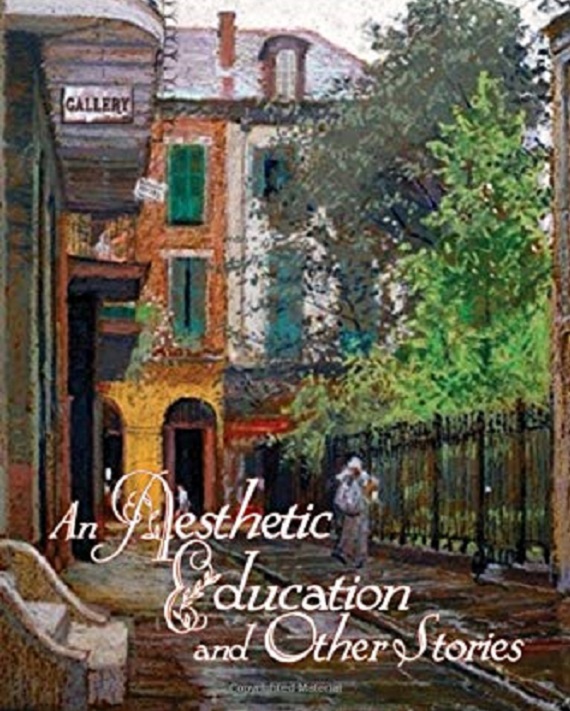A review of An Aesthetic Education and Other Stories (Green Altar Books, 2019) by Catharine Savage Brosman
One of the most felicitous occurrences in literature is when a first-rate poet turns his or her talents to the writing of short fiction. Among those who have done so, turning out first-rate stories, have been William Carlos Williams, Dylan Thomas, Elizabeth Bishop, and Charles Causley. (I am writing now of authors who specialize mainly in poetry and have never attempted, or, at least, never published a full-length novel; thus protean talents such as Robert Penn Warren, Wendell Berry, Fred Chappell, James Still, and Jesse Stuart, et al. do not make the list.) Given the affinities between poetry and the short story, the compression of language, the precision of theme, the more intense focus on specific, telling detail, it seems perfectly natural that a poet would undertake work in this genre.
We must now add another name to the illustrious company above, Catharine Savage Brosman, one of America’s leading formalist poets and literary critics, whose first collection of stories, An Aesthetic Education and Other Stories, has just been published in a most handsome edition by Green Altar Books, the literary imprint of Shotwell Publishing. It is a volume so delicious to read, so impressive in its execution, one hungers for a follow-up.
The stories herein are linked by location (almost all of them take place in New Orleans with detours to Paris and El Paso) and by narrator, Dr. Harriet “Harry” D’Aquin, a painter and curator at the Orleanian Institute, a combination museum and art college in the Crescent City. Given her vocation, Harry is sharply observant and a woman of firm moral and aesthetic convictions. (One suspects she possesses more than just a bit of her creator’s outlook on matters of art and life, although readers are told not to misidentify the two.) She is also in a fine position to watch the parade of ne’er do wells who seem to gravitate so easily to the world of contemporary art – the painters manqué, the career opportunists, the fakes, and the men on the make – and has no qualms about pointing out their foolishness and their cant. In doing so, she usually leaves off the canvas details of her own personal life, other than the fact she is widowed and studied art in New York in her youth. (An exception would be the love story “Cubist Angles,” in which Harry’s emotions are most certainly in the foreground.) In this sense, Harry reminds one of the narrator of Anthony Powell’s novel sequence A Dance to the Music of Time, Nicholas Jenkins, who also manages to keep much of his own private life out of his narrative, thus allowing more place in said dance for the myriad of eccentric characters. Brosman also has the same fine sense of the ridiculous in human relations as Powell and uses the same gentle manner in revealing it. Harriet is spot on when she shows us the concupiscence of the overpaid art lecturer (“Icons”) or the obvious lack of talent of the latest art-world sensation (“An Aesthetic Education”), but she is never cruel. She is decent, as are most of her morally astute friends and colleagues, as is her lovelorn aunt Dora (“A Summer Sketch”), as is the middle-aged Hispanic woman who shows glimmers of artistic genius (“Chiaroscuro”). That is one of the things which set this collection apart from other current fiction. Her characters are by and large decent people who maintain their principles in a time when merely selling out would be so much simpler and more profitable.
In the book’s introduction, Brosman is quick to point out that she writes from the standpoint of one seeking to maintain what Edmund Burke (and later Russell Kirk) called “the permanent things,” those immutable truths which separate men from beasts, and she succeeds. One admires the spiritual dimension of some of the stories, mostly notably “Petroglyphs,” in which a couple, devastated by the loss of their only child, find, finally, solace and reconciliation thanks to coming upon, in the desert, an image from the religious rites of a primitive people. In these stories, art redeems and heals. It is never an agent of destruction, except when used by the sad hustlers and miscreants mentioned above.
It is fitting this book should have art as its center of concern, a locus from which to comment truthfully on human nature. It is a work of art itself, from the lovely cover painting to the richly drawn contents between covers. Brosman uses her inestimable poetic powers to paint for the reader the hustle and bustle of New Orleans, the elegance of Paris, and the bright, brittle beauty of West Texas. She provides a vivid gallery of human relations, emotions, failures, and aspirations. It is a collection hard to forget and easy to enjoy.







